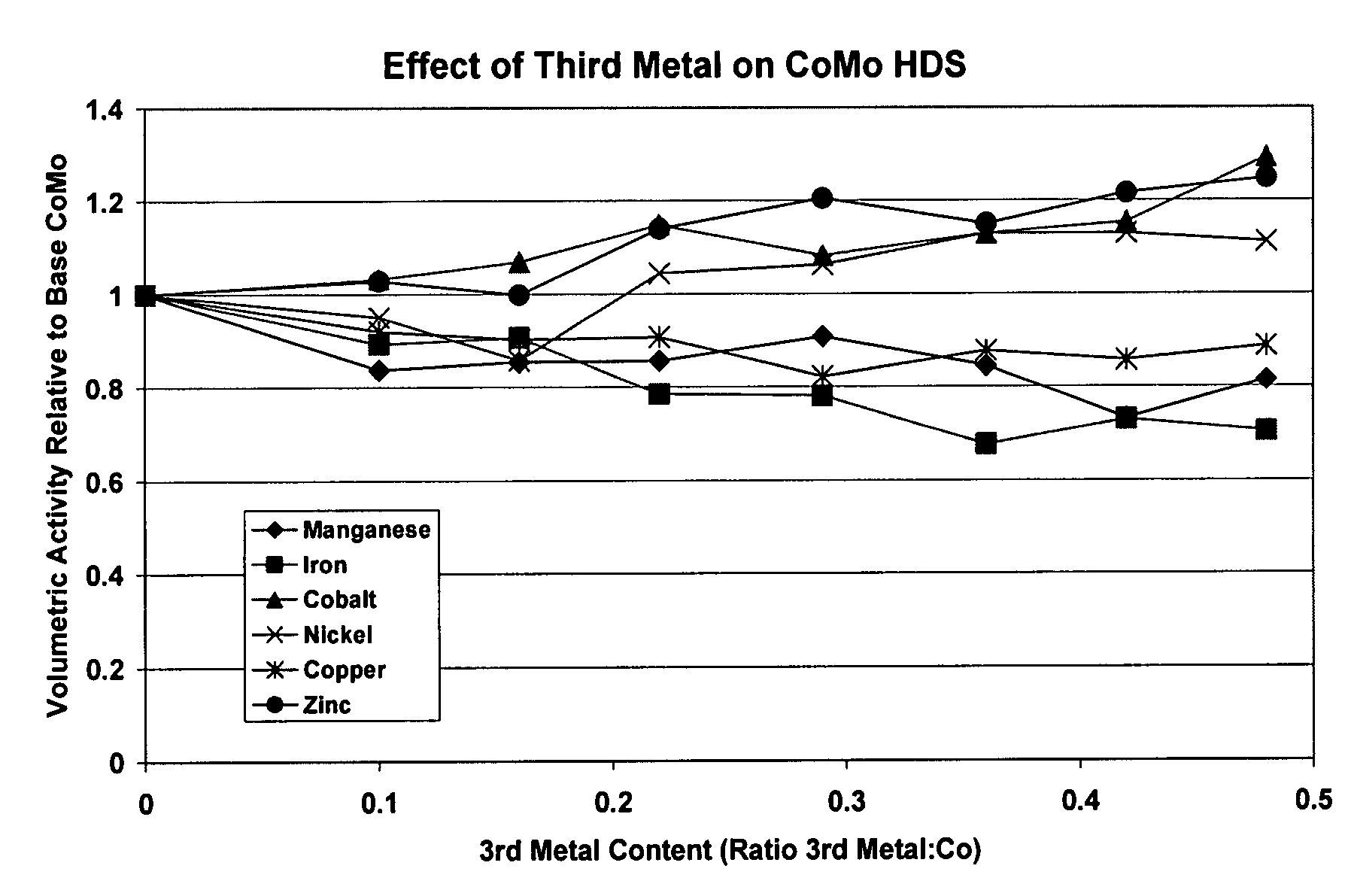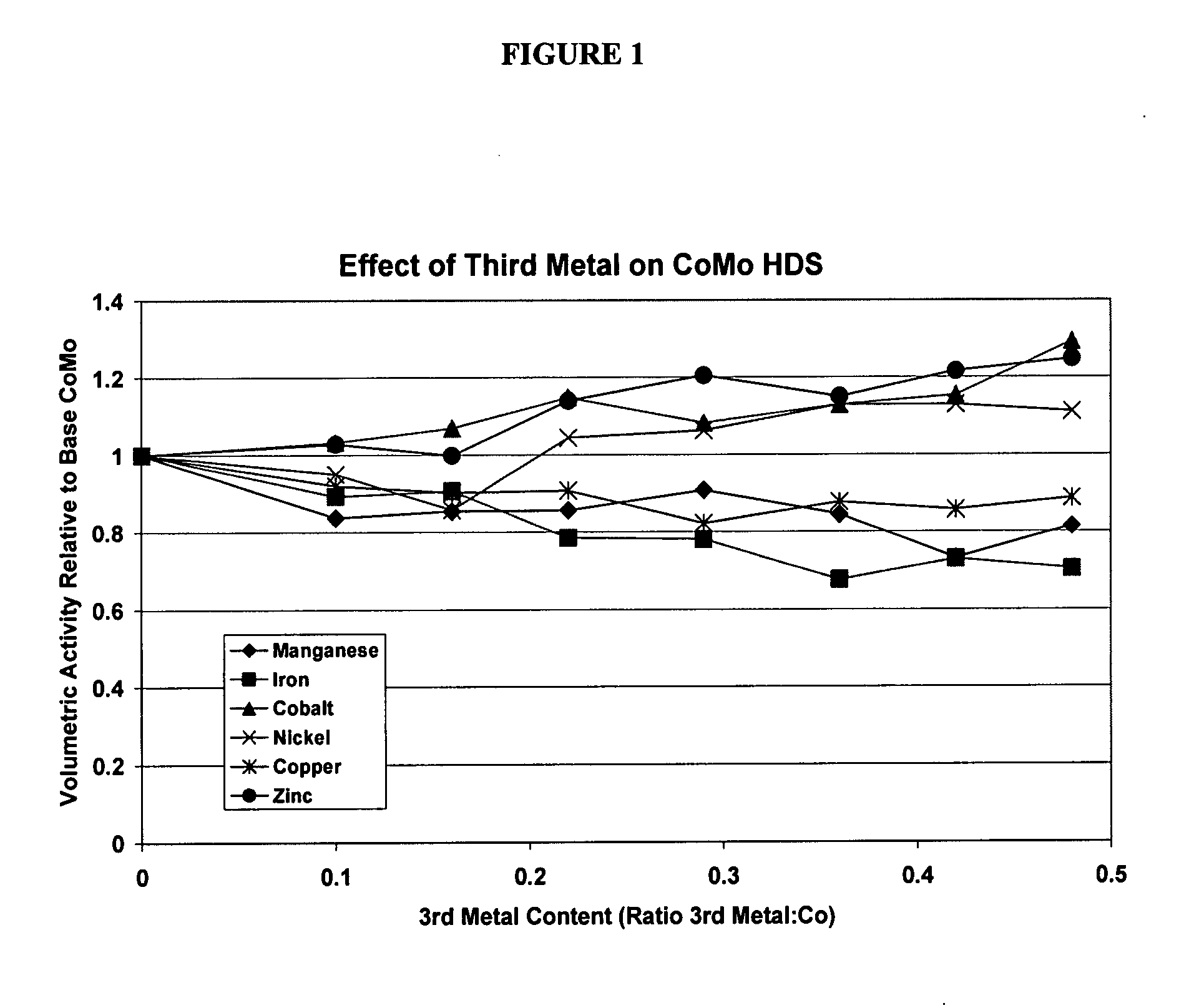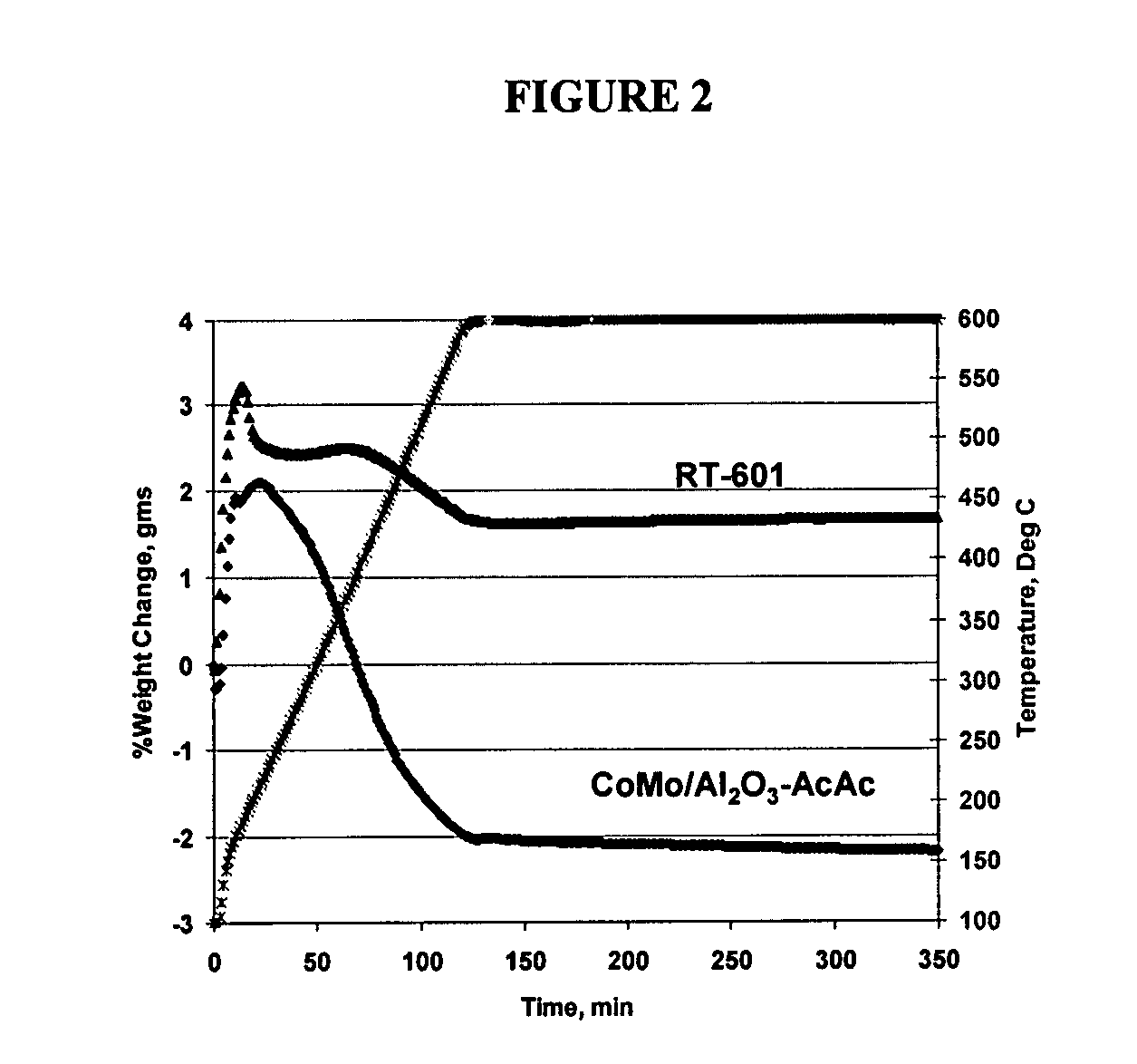High activity supported distillate hydroprocessing catalysts
a technology of hydroprocessing catalysts and high activity, which is applied in the direction of physical/chemical process catalysts, metal/metal-oxide/metal-hydroxide catalysts, organic compounds/hydrides/coordination complexes, etc., and can solve the problem of sulfur contamination further complicated and the supply of crudes low in these contaminants is decreasing
- Summary
- Abstract
- Description
- Claims
- Application Information
AI Technical Summary
Benefits of technology
Problems solved by technology
Method used
Image
Examples
example 1
[0053]This example is directed to catalyst preparation. Catalysts were prepared using commercially available alumina supports having the following properties:
[0054](1) SC-1735: Davicat AL-2700, large pore alumina beads with particle diameters in the range of 1.2-2.4 mm, BET SA: 150 m2 / g, Hg pore volume: 1.16 cc / g, median pore diameter by Hg: 299 Å, density: 0.45 g / cc, water pore volume: 1.14 cc / g, water pore volume per cc of support: 0.51 cc / cc.
[0055](2) SC-1736: Davicat AL-2750, large pore alumina beads with particle diameters in the range of 2.4-4.8 mm, BET SA: 244 m2 / g, Hg pore volume: 1.23 cc / g, median pore diameter by Hg: 162 Å, density: 0.43 g / cc, water pore volume: 1.22 cc / g, water pore volume per cc of support: 0.52 cc / cc.
[0056]The following procedure was used for impregnating the above alumina supports with a solution. Cobalt carbonate was mixed with citric acid in a citric acid to Co molar ratio of 1.2 and the aqueous mixture heated at 50° C. until the cobalt carbonate dis...
example 2
[0058]This example is directed to the catalyst testing protocol. A catalyst was prepared by a double impregnation of support SC-1735 with a solution containing Co, Mo, citric acid (citric acid:Co molar ratio of 1.8) and ethylene glycol (ethylene glycol:citric acid molar ratio of 1.8). The impregnated support contained 442 mg MoO3 and 115.1 mg CoO per 1 ml of support after calcining at 375° C. under nitrogen. The calcined support was sulfided in situ at 500 psi (3448 kPa) and a treat gas rate of 700 Scf / B (125 m3 / m3), and tested for HDS activity in a reactor with a catalyst loading of 1.0 cc. In comparison, the commercially available Ketjenfine® 757 (KF-757) was evaluated in a parallel reactor under the same condition. After an in-situ sulfiding step, the catalysts were subjected to a virgin distillate feed (Feed #1 in Table 1) at a temperature of 625° F., a total of 500 psig pressure, and a hydrogen gas treat rate of 700 SCF / B. After 144 hr of running on feed, the catalyst HDS activ...
example 3
[0060]A catalyst was prepared by a double impregnation of support SC-1736 with a solution containing Co, Mo, citric acid (citric acid:Co molar ratio of 1.8) and ethylenediamine(ethylenediamine:Co molar ratio of 1.8). The impregnated support contained 475 mg MoO3 and 123.6 mg CoO per 1 ml of support after calcining at 375° C. under nitrogen. The calcined support was sulfided in situ at 500 psi (3448 kPa) and a treat gas rate of 700 Scf / B (125 m3 / m3) and tested for HDS activity in a reactor with a catalyst loading of 1.0 cc. In comparison, commercially available KF-757 was evaluated in a parallel reactor under the same condition. After an in-situ sulfiding step, the catalysts were subjected to a virgin distillate feed (Feed #1 in Table 1) at a temperature of 625° F., a total of 500 psig pressure, and a hydrogen gas treat rate of 700 SCF / B. After 144 hr of running on feed, the catalyst HDS activity was 300% of the KF-757 run under the same conditions.
PUM
| Property | Measurement | Unit |
|---|---|---|
| temperature | aaaaa | aaaaa |
| temperatures | aaaaa | aaaaa |
| temperature | aaaaa | aaaaa |
Abstract
Description
Claims
Application Information
 Login to View More
Login to View More - R&D
- Intellectual Property
- Life Sciences
- Materials
- Tech Scout
- Unparalleled Data Quality
- Higher Quality Content
- 60% Fewer Hallucinations
Browse by: Latest US Patents, China's latest patents, Technical Efficacy Thesaurus, Application Domain, Technology Topic, Popular Technical Reports.
© 2025 PatSnap. All rights reserved.Legal|Privacy policy|Modern Slavery Act Transparency Statement|Sitemap|About US| Contact US: help@patsnap.com



